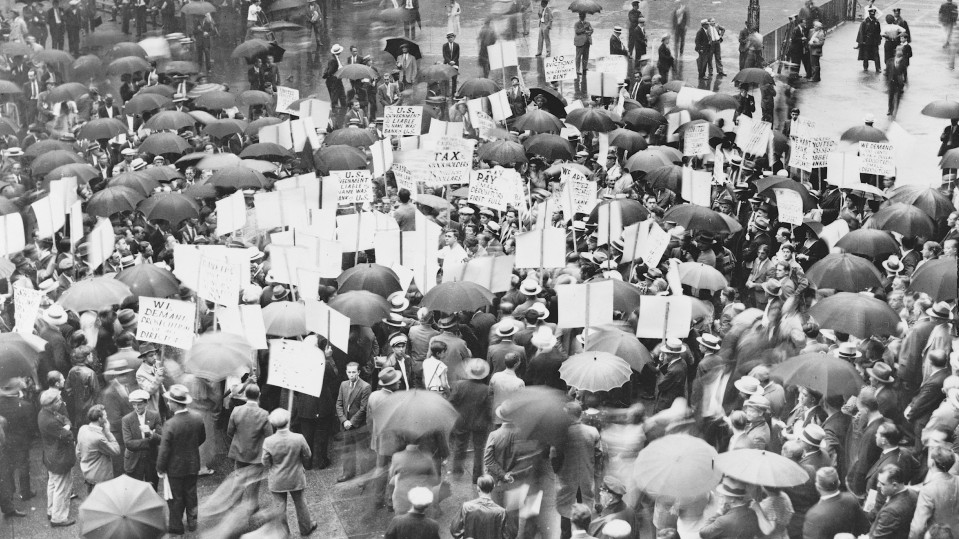

Tech Policy
The official jobless numbers are horrifying. The real situation is even worse.
The record unemployment numbers only hint at the crisis facing many with no work.

The shutdown of much of the service economy—think restaurants, hotels, and retail stores—in an attempt to slow down the spread of the coronavirus is sending the US toward a deep recession. It isn’t a question of “if.” It’s a question of how deep it will get, how long it will last, and perhaps most important, who will be hit hardest by this devastating downturn.
This week the Labor Department announced that a jaw-dropping 3.3 million people filed jobless claims; the previous weekly record was 695,000, in 1982. As bad as that number is, though, it greatly understates the crisis, since it doesn’t take into account many part-time, self-employed, and gig workers who are also losing work.
On the basis of estimates that the economy will shrink by a staggering 25% in the second quarter, which ends in June, economists put the number of jobs lost at somewhere around 5 million by the summer. The head of the St. Louis Fed predicts a 30% US unemployment rate and a 50% drop in GDP by summer. But of course, no one really knows, in part because we have never faced a similar crisis in anyone’s memory.
“It’s impossible to know how the world is changing,” says David Autor, an MIT economist and one of the world’s leading labor economists. “It isn’t like anything we’ve seen in a hundred years.” In any past recession or depression, the economic solution has always been to stimulate demand for labor—to get workers back on the job. But in this case, we’re purposely shutting down economic activity and telling people to say at home. “It’s not just the depth of the recession,” Autor says. “It’s qualitatively different.”
The sudden drop-off in GDP means a recession with lots of jobs lost, but Autor also worries about small businesses as their cash flows turn off. They will still have bills to pay, and many will fail without government help. Such a disruption will make it even more difficult to restart the economy as the outbreak gets under control. Then there’s the uncertainty about how long it will take to defeat the disease; uncertainty is always bad for business.
One of the biggest fears about the upcoming recession is that those least able to withstand the downturn will be hit hardest—low-wage service workers in restaurants and hotels, and the growing number of people in the gig economy. For the last two decades, service workers have become an increasingly large part of the US economy. People without a college degree increasingly work in this sector because many skilled and semi-skilled office and manufacturing jobs have dried up, says Autor. It is people in these service jobs, already low paid and often with few health and other benefits, who will struggle the most.
“On a good day, they are vulnerable, and on a bad day they are even more vulnerable,” Autor says. “And this is a very bad day.”
Shutting down the service economy is “highly appropriate” and absolutely needs to be done to slow the outbreak, Autor says. But it means we need to give affected workers and businesses the means to weather the shutdown and, once the outbreak is under control, help restart the economy.
Some mechanisms to do so have been included in the $2 trillion stimulus package expected to be passed by Congress this week. The legislation will send $1,200 to each American earning less than $75,000. And it would expand unemployment benefits for the first time to gig workers and self-employed people. It would also spend hundreds of billions to help businesses stay afloat.
It’s not perfect, says Arindrajit Dube, an economist at the University of Massachusetts, Amherst. But increasing unemployment insurance and expanding eligibility will help millions who will lose their jobs, he says, and in that sense the plan is a “major improvement upon the status quo.”
The shutdown will certainly hammer parts of the country much harder than others. Cities like Las Vegas and Orlando, which depend on hotels and tourists, will be severely affected, according to numbers from the Brookings Institution. Regions that are less vulnerable include the familiar list of booming high-tech cities like San Jose, California and Provo, Utah. The worst affected will be “places with gargantuan leisure hospitality economies,” but a broad swath of regions with large service economies will be hit hard, says Mark Muro, coauthor of the report.
Muro and his colleagues argue that supplying local aid to these regions must be a top priority. Muro points out that many of these places have never recovered from the 2008 financial crisis. Not helping them now “is a recipe for more permanent damage,” he says. “State and local governments are going to be feeling a world of hurt.”
The aid in the stimulus bill to localities “isn’t big enough, or flexible enough, or regionally targeted enough,” according to Muro. What states and municipalities need, he says, is unrestricted funding, the equivalent of the cash being provided for individuals. And federal government support needs to more targeted to particularly troubled places, including those areas that never recovered from the last recession.